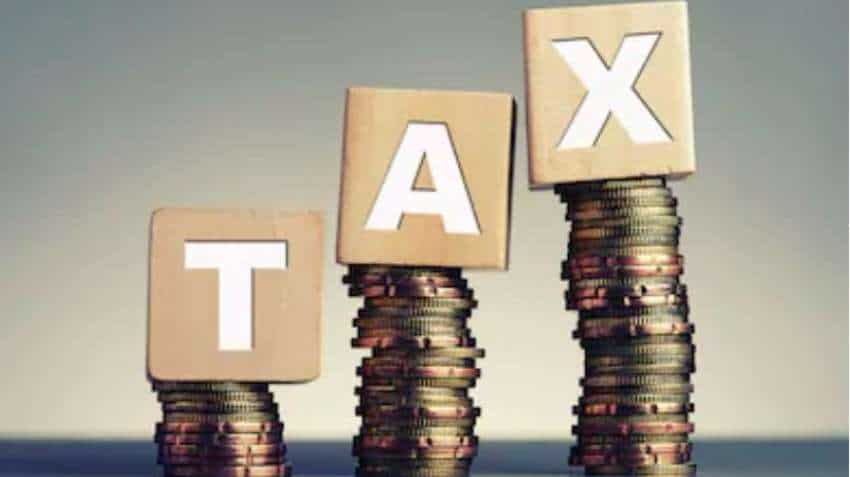Government puts PF in income tax bracket! Check how much you need to earn to pay tax on provident fund contribution
Provident Fund (PF) contribution above Rs 2.5 lakh per annum will pull one's EPF and PF account out of the EEE bracket from 1st April 2021.

Provident Fund (PF) contribution above Rs 2.5 lakh per annum will pull one's EPF and PF account out of the EEE bracket from 1st April 2021. As per Budget 2021 announcement made by Finance Minister Nirmala Sitharaman, the Employees' Provident Fund (EPF) and Provident Fund (PF) account holders will have to pay tax on the interest earned on the PF or EPF contribution in excess of Rs 2.5 lakh annually. Means, suppose, if a PF or EPF account holder invests Rs 3 lakh in Provident Fund account in an year, then she, or he, will have to pay income tax on PF interest earned on the amount of Rs 50,000 [Rs 3lakh - Rs 2.5 lakh].
Speaking on the rationalization of tax free income on Provident Fund or Employees' Provident Fund, FM Nirmala Sitharaman said, "In order to rationalise tax exemption for the income earned by high income employees, it is proposed to restrict tax exemption for the interest income earned on the employees’ contribution to various provident funds to the annual contribution of Rs 2.5 lakh. This restriction shall be applicable only for the contribution made on or after 01.04.2021."
Elaborating upon this Modi Government's move, Pankaj Mathpal, MD at Optima Money said, "The Modi Government move won't affect the middle class income group because for paying income tax on the PF interest, one needs to pay above Rs 2.5 lakh per annum in a PF account."
After giving good news to the middle class, Mathpal proceeded to explain the rest. He said, "Since, one contributes 12 per cent of one's basic salary in PF account, one's basic salary will be Rs 20,83,333.33 annually in order to get PF taxed. Remember, this is the basic salary. Monthly salary would be much higher than the basic salary if you add all the other components."
See Zee Business Live TV Streaming Below:
So far so good.
Then, correlating this Modi Government's Budget 2021 move with the new wage code, which will get implemented from 1st April, 2021, Singhal said, "The new wage code says that one's basic salary will be at least 50 per cent of the total income. So, taking this new wage code into account, if a person has a basic annual salary of Rs 20,83,333.33, the net annual salary would be at least Rs 41,66,666.66 or Rs 3,47,222.22 monthly salary. And those that are earning this kind of amount, or above it, will have to pay tax on their PF investment."
Mathpal concluded, "So, this move of the Modi government is to discourage those high income group people who were using the voluntary Provident Fund (VPF) route by choosing higher monthly PF contributions in their PF account to avoid income tax outgo.
Get Latest Business News, Stock Market Updates and Videos; Check your tax outgo through Income Tax Calculator and save money through our Personal Finance coverage. Check Business Breaking News Live on Zee Business Twitter and Facebook. Subscribe on YouTube.
RECOMMENDED STORIES
04:09 PM IST











 EPFO, ESIC subscribers may soon use claim amounts via e-wallets: Labour Secretary
EPFO, ESIC subscribers may soon use claim amounts via e-wallets: Labour Secretary EPFO extends deadline for employers to upload pending pension applications until January 31, 2025
EPFO extends deadline for employers to upload pending pension applications until January 31, 2025 EPFO Board approves key reforms: Auto-claim limit increased to Rs 1 lakh, pension disbursement streamlined & other decisions
EPFO Board approves key reforms: Auto-claim limit increased to Rs 1 lakh, pension disbursement streamlined & other decisions Domestic youth unemployment lower than global levels: Labour Ministry
Domestic youth unemployment lower than global levels: Labour Ministry Labour Ministry asks EPFO to focus on preparations to launch ELI Scheme
Labour Ministry asks EPFO to focus on preparations to launch ELI Scheme